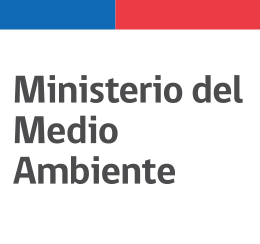Identificación de bobby23:
Tortugas de Fango
(Género Terrapene)
Añadido el 22 junio 2024
Apoyo a
Identificación de bobby23:
Tortugas de Fango
(Género Terrapene)
Añadido el 22 junio 2024
Apoyo a
Identificación de bobby23:
Tortugas de Fango
(Género Terrapene)
Añadido el 22 junio 2024
Apoyo a
Identificación de bobby23:
Tortugas de Fango
(Género Terrapene)
Añadido el 22 junio 2024
Apoyo a
Identificación de bobby23:
Tortugas de Fango
(Género Terrapene)
Añadido el 22 junio 2024
Apoyo a
Identificación de bobby23:
Tortugas de Fango
(Género Terrapene)
Añadido el 22 junio 2024
Apoyo a
Identificación de bobby23:
Tortugas de Fango
(Género Terrapene)
Añadido el 22 junio 2024
Apoyo a
Identificación de bobby23:
Tortugas de Fango
(Género Terrapene)
Añadido el 21 junio 2024
Apoyo a
Identificación de bobby23:
Terrapene triunguis,
Añadido el 21 junio 2024
Apoyo a
Identificación de bobby23:
Tortugas de Fango
(Género Terrapene)
Añadido el 21 junio 2024
Apoyo a
Identificación de bobby23:
Tortugas de Fango
(Género Terrapene)
Añadido el 21 junio 2024
Apoyo a
Identificación de bobby23:
Terrapene triunguis,
Añadido el 21 junio 2024
Mejorando
Identificación de bobby23:
Terrapene triunguis,
Añadido el 21 junio 2024
Apoyo a
Identificación de bobby23:
Terrapene triunguis,
Añadido el 21 junio 2024
Apoyo a
Identificación de bobby23:
Terrapene triunguis,
Añadido el 21 junio 2024
Apoyo a
Observ.
paulinesDescripción
Some yahoo took out a beautiful box turtle, probably in the prime of its life.
Identificación de bobby23:
Terrapene triunguis,
Añadido el 21 junio 2024
Apoyo a
Observ.
paulinesDescripción
Female box turtle, carapace about 5 inches long. Very much luckier than the last one I photographed. This one is on a forest road in the Ozarks--maybe she'll live a longer life.
Identificación de bobby23:
Terrapene triunguis,
Añadido el 21 junio 2024
Apoyo a
Identificación de bobby23:
Terrapene triunguis,
Añadido el 21 junio 2024
Apoyo a
Identificación de bobby23:
Terrapene triunguis,
Añadido el 21 junio 2024
Apoyo a
Identificación de bobby23:
Terrapene triunguis,
Añadido el 21 junio 2024
Apoyo a
Identificación de bobby23:
Rana Verde
(Lithobates clamitans)
Añadido el 15 junio 2024
Apoyo a
Identificación de bobby23:
Garza Morena
(Ardea herodias)
Añadido el 15 junio 2024
Mejorando
Identificación de bobby23:
Hierba del Paño
(Verbascum thapsus)
Añadido el 15 junio 2024
Apoyo a
Identificación de bobby23:
Onoclea sensibilis,
Añadido el 15 junio 2024
Apoyo a
Identificación de bobby23:
Pangaeus bilineatus,
Añadido el 15 junio 2024
Principal
Fotos / Sonidos
Qué
Ronco Amarillo (Bairdiella chrysoura)Observ.
carlos_leonardo1Descripción
Clima: cálido
Especies observadas: 1
Identificación de bobby23:
Peces con Aletas Radiadas
(Clase Actinopterygii)
Añadido el 12 junio 2024
Mejorando
Identificación de bobby23:
Peces con Aletas Radiadas
(Clase Actinopterygii)
Añadido el 12 junio 2024
Apoyo a
Identificación de bobby23:
Peces con Aletas Radiadas
(Clase Actinopterygii)
Añadido el 12 junio 2024
Apoyo a
Identificación de bobby23:
Manzanos
(Género Malus)
Añadido el 21 mayo 2024
Apoyo a
Identificación de bobby23:
Tritón Oriental
(Notophthalmus viridescens)
Añadido el 24 abril 2024
Apoyo a
Estadísticas
- 20617











































